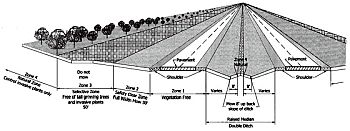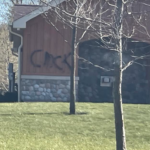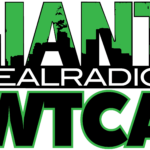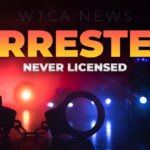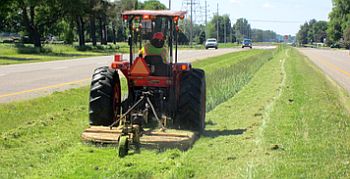 The Indiana Department of Transportation (INDOT) maintains the grass-covered medians and roadsides along federal interstates, U.S. highways, and state routes in Indiana. INDOT maintains roadside grass and vegetation in an environmentally sensitive manner that is consistent with the conditions presented by local climate, topography, vegetation, and rural and urban development.
The Indiana Department of Transportation (INDOT) maintains the grass-covered medians and roadsides along federal interstates, U.S. highways, and state routes in Indiana. INDOT maintains roadside grass and vegetation in an environmentally sensitive manner that is consistent with the conditions presented by local climate, topography, vegetation, and rural and urban development.
Research has shown that correctly timing the early mowing cycle will slow the growth of grass and vegetation and reduce the need for future mowing and herbicide treatments.
INDOT maintains more than 40,000 acres along Indiana’s roadways and strives to balance safety, costs, environmental protection, and aesthetics when maintaining roadside vegetation. Our vegetation management policy is focused on improving safety along our highways by maintaining vegetation at a safe height for driver visibility. Our practices also preserve natural wildlife habitat and plants, control or remove non-native and noxious plants, and improve the overall look of roadside rights-of-way.
Our Management Policy Explained
INDOT’s mowing and vegetation management policy includes herbicide treatments, right-of-way mowing, vegetation management, and seeding with wildflower and native plants and grasses.
It costs Indiana taxpayers approximately $8 million each year to mow the 40,000-plus acres along interstates, U.S. highways and state routes. Herbicide application costs approximately $32 per acre.
Successful vegetation management reduces the need for mowing and herbicide application, which benefits the environment and saves money. Use of native plants and grasses helps battle invasive and noxious plants.
Vegetation Management Goals
-
Protect the environment and reduce costs
-
Reduce erosion and provide storm drainage
-
Promote and preserve native wildlife habitats and plants
-
Improve roadside appearance
Our Mowing Policy Explained
INDOT crews closely monitor the growth of grass and vegetation and they time INDOT’s mowing cycles based on geographic location and weather.
Except in areas where we mow tall vegetation to improve driver visibility, our first mowing cycle takes place after rapid spring plant growth ends – which is approximately mid-May in the southern part of the state and early June in the north. Maintenance crews address sight-distance concerns between mowing cycles through selective mowing and herbicide application.
Vegetation Management Zones
INDOT’s mowing and vegetation management activities focus
on three zones:
-
Clear Zone: This area includes highway medians and extends from the edge of the roadway’s shoulder pavement to 30 feet out. This area is mowed twice a year and receives selective herbicide treatment every two years to target invasive and noxious plants. In urban areas, this zone may be mowed three times a year.
-
Selective Zone: In areas where right-of-way extends from 30 to 80 feet from the edge of pavement, INDOT will allow native plants more room to grow and create a natural appearance. In rural areas, INDOT will use spot mowing and herbicide to control invasive and noxious plants. In urban areas, adjacent property owners are allowed to maintain this area.
-
Natural Zone: Where right-of-way extends more than 80 feet from the road, INDOT will allow native plants and vegetation to grow and serve as a defense against invasive species. This area shields the roadway from neighboring properties, promotes native plants, and connects fragmented wildlife habitat.
-
Other Zones: Areas adjacent to INDOT bridges and environmentally sensitive areas receive special treatment.
Mowing and Herbicide Guidelines
-
Mowers are adjusted to cut at a height of no less than six inches (6”) to control weeds and are operated to prevent scalping, rutting, or other damage.
-
Areas planted with prairie grasses or areas that support unique wildlife are mowed only under
-
specific guidelines.
-
Natural snow fences planted with prairie grasses are cut at a height of between 8 and 12 inches (8” to 12”).
-
Areas planted with trees and steep slopes are not mowed.
-
Herbicide is not used when winds may blow it to nearby plants or when property owners, including farmers, maintain adjacent property.
Safety Tips for Motorists
INDOT mowing crews and equipment operate adjacent to Indiana’s roadways. Motorists are asked to be aware of mowing operations and give our workers the time and space they need to do their jobs safely:
-
Obey all posted warning signs
-
If possible, merge and change lanes away from mowers
-
Do not use cell phones while driving, especially in work zones
|
|






